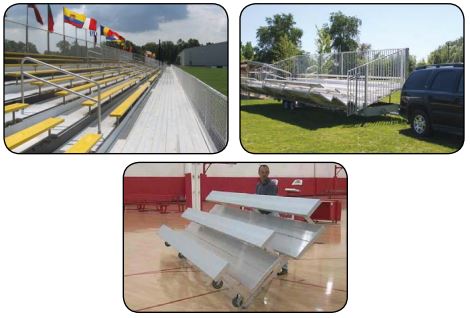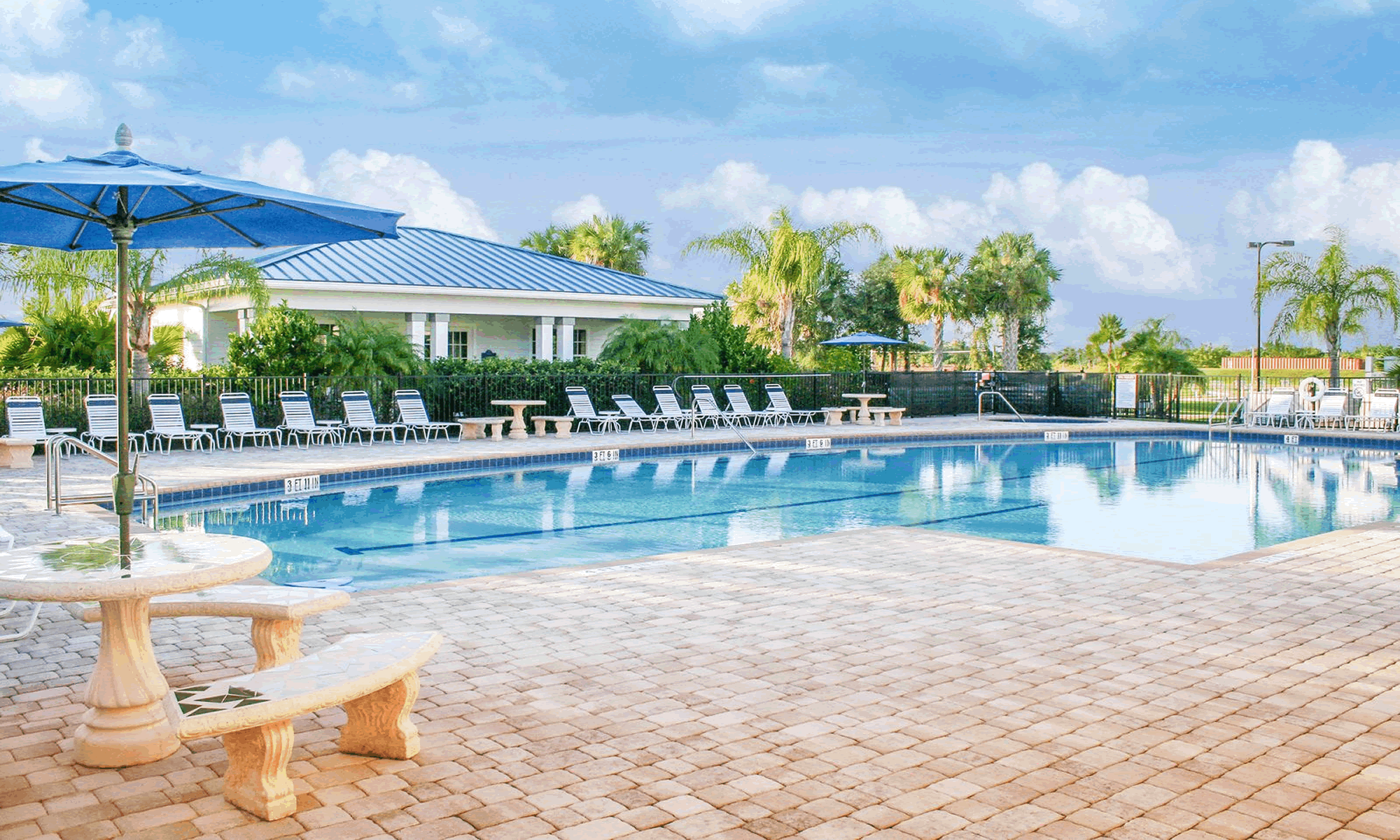Basic Safety Guidelines
Over 20,000 people are hurt annually in accidents involving bleachers! Many of these injuries involve children. A large percentage are a result of a person falling from, or through, bleachers to the ground.
Falls from bleachers typically occur when guardrails are missing from the back or sides of bleachers but can also ensue when there are openings between seating and footboards that are big enough to allow a person through. The Consumer Product Safety Commission (CPSC) has developed guidelines to prevent these falls.
Many bleachers in facilities today pose a fall hazard, especially to children, due to the fact that these bleachers may have been build and installed when building codes did not require guardrails and allowed openings that were big enough for a child to fit through. To prevent falls, it is recommended that guardrails and openings meet the following recommendations:
- A bleacher should have a guardrail along the back, and surrounding the open ends, where the drop is more than 30″ to the ground below.
- The guardrail should be at least 42″ high and, if using a vertical picket guardrail, all openings should be small enough that a 4″ sphere cannot fit through.
- If chain link fencing is used, it is recommended using chain link that has a 1.25″ (or less) mesh to discourage kids from climbing.
- Where visibility would not be significantly impaired, use solid materials to block openings.
Types of Bleachers
Bleachers are used by spectators to comfortably view sporting events, graduations, races, parades and many other activities. They are structures that provide tiered seating and come in a variety of configurations and sizes.
ParknPool offers numerous bleacher options that fall into three categories (pictured respectively): permanent/stationary, portable/towable, and temporary (generally known as Tip N’ Roll). Permanent bleachers are attached to the ground with anchors while portable bleachers are able to be used at multiple locations. Temporary bleachers are usually smaller units that are only used for specific events and can be stored while not in use. The guidelines in this guide, and the ones by the CPSC, apply to these three categories of bleachers.

Retrofitting Existing Bleachers
If retrofitting rather than replacing your existing set of bleachers is more feasible for your budget, the current condition and structure of your bleachers will determine the materials and methods needed to retrofit. It is imperative to ensure that the methods and materials used do not introduce the possibility of new hazards such as bleacher tip-over, bleacher collapse, guardrail collapse, and contact or tripping hazards.
Where practical, features such as aisles, handrails and non-slip surfacing should be incorporated into any retrofit project. Consult with a licensed professional or qualified bleacher firm to learn more about what is important in aiding people to move safely about on bleachers.
Rigid material, such as aluminum, should be used to close any openings between the seating and footboards. Chain link or fencing material can introduce potential trip hazards, allow debris to collect under the seats that is not easy to remove, and encourage children to play or hang on it.
ParknPool and the CPSC recommend that you consult with your local building officials to determine whether a permit is required to make any retrofit changes to your existing bleachers. It is also advisable to check local requirements for such things as aisles and guardrails, ADA, or other conditions. Building codes vary by state, year written and by the group that issues them – International Building Code (IBC), Uniform Building Code (UBC), Standard Building Code (SBC), National Fire Protection Association (NFPA), etc. – so be sure to check with your local building codes.
Guardrails, Handrails & Aisles
Having the appropriate components to aid in the access and egress on, of and around bleacher units is imperative for user safety. Guardrails missing from the backs of bleachers, or open sides can cause injury from falls. Gaps in the guardrail, between the footboard and seat, or at the bottom of the guardrail that are large enough for a person to pass through can also cause injury.
Guardrails should not encourage children to climb on or over them. The easiest way to do this is by choosing bleachers with vertical picket guardrails or make sure the chainlink is less than 1.25″ wide. All the bleachers ParknPool offers are available with vertical picket guardrails. In most cases the fourth row of a set of non-elevated bleachers is taller than 30″ which means that there is a riser plank (pictured below) to stop small children from falling through. This closes the gap between the seat and foot boards.
Aisles, handrails and non-skid surfacing are key factors in allowing people to safely move around on bleachers. Many older bleachers do not have these features but can be retrofitted to make existing bleachers safe.

Maintenance & Inspections
Whether you choose to retrofit your current bleachers or order replacement ones, they should be carefully inspected at least once a quarter to identify any damage to the structure or disrepair that could result in injury or death. Problems identified should be corrected immediately. Any inspections or maintenance should be completed by a trained individual, and any action taken should be documented. In addition to the quarterly inspections, the CSPC recommends that a licensed professional engineer or person qualified to provide bleacher products and services should inspect the bleachers at least once every two years. At that time, a written certification will be issued that the bleachers are fit for use.
It is crucial to follow the CPSC’s guidelines to ensure the highest safety. It is imperative that you deal with an individual who is knowledgeable and equipped to answer any questions, as well as provide bleacher seating that meets all of the CPSC’s guidelines.
No one’s safety is worth taking a risk by leaving outdated bleachers in place!
Call ParknPool at 877.777.3700 today and speak to one of our knowledgeable account managers who are waiting to answer all of your questions!


